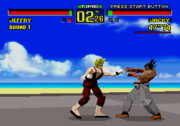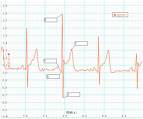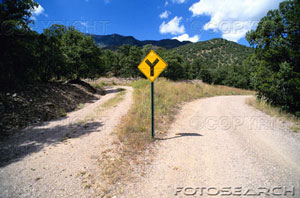Yes, aikido is a language. In fact, we could call it a "physical language"; a "communication between shite and uke".
If you look at it, aikido includes all the elements we find in other forms of communication (including both verbal and non-verbal). Let me be very clear about the fact that this is not due to aikido words being in Japanese, since native Japanese will go through the same process of learning as non-Japanese and may even have a disadvantage due to misunderstanding the application of Japanese language to the aikido language. Those languages may share some cultural linkages, just as Hamlet, Beowulf, and The Canterbury Tales have cultural connections to modern English, but we can hardly call them the same thing.
As a beginner in aikido, we learn like any baby learns any language. We mimic our parents "teachers" and learn from our older siblings "sempai", ocassionally even picking up words and phrases that they don`t want us to. We are the mirrors of our parents, and will reflect their mannerisms unconciously. At this level, we struggle with our bodies to make the sounds of aikido, and usually with only limited success. It can be frustrating. Our words are clumsy, and we have trouble to say more than one at a time. We fail to grasp the meanings fully, but are trying very hard to make ourselves understood. repetition fosters confidence.
After some time, we have learned some of the basic words like kamae, and are beginning to "speak". However, we may still be translating in our heads (in this case translating words to actions), which takes time, and may have trouble carrying on more than a "one-sided" conversation. We begin to discover how this communication can give us certain responses in certain situations, but we have a long way to go before we achieve fluency.
Over a period of many years, often without realizing it, we reach a point where the language of aikido becaomes native and fluent to us. At this level, we can combine words and phrases, and our use of this language can even be considered elegant. Our physical "dialogue" with uke becomes a real communication, with all the subleties that entails, and we can both speak and listen to each other. We are able to interact in nearly any situation effortlessly, and no longer have to translate phrases like shiho nage and kote gaeshi in our minds before we use them.
OK, now you can probably see where this is going. This also means that the same techniques I used to learn japanese will work for learning aikido. I want to:
1) Immerse myself as much as possible
2) Practice regularly with a variety of conversation partners
3) Build vocabulary and become fluent in fundamentals first
4) Seek out and eliminate mistakes; try to make even small improvements
5) Try over time to focus on chaining together words into phrases
6) Remember to build listening as well as speaking comprehesion
7) Seek out examples of the language all around me and try to understand them
8) Be aware of my own growth and not get frustrated even at failed attempts
9) Use my language as a way of connecting to others
10) Never stop learning
Like any language, English, for example, there are dialects. We find under the general language of aikido, dialects like Yoshinkan, Tomiki, Aikikai, Shinshintoitsu and others, which organically arise from circumstance and situation. We are still able to share a foundation with these other languages and can communicate on a basic level, even though some dialects "spell words" and use them a bit differently sometimes (like the differences between Parisian French and Canadian French or between American, British, Australian, and South African English).
Finally, along the idea of aikido as communication/language, I want to leave all of you with the same few questions I have been asking myself as I wrote this:
- How will I communicate? harsh and rude? Or elegant and kind?
- Will my words hurt or help other people?
- Will I be able to listen as well as speak?
- Will my words "persuade" my partner?
- What does my use of words say about me as a person?
Looking forward to our next "mat chat"...
Osu!





















